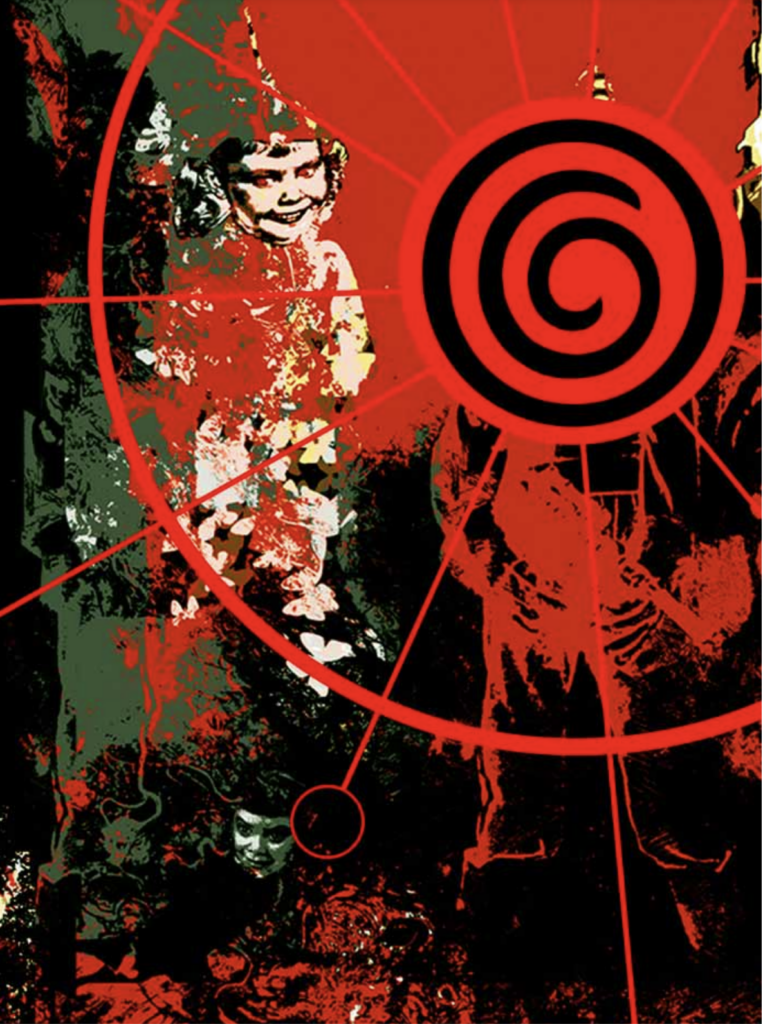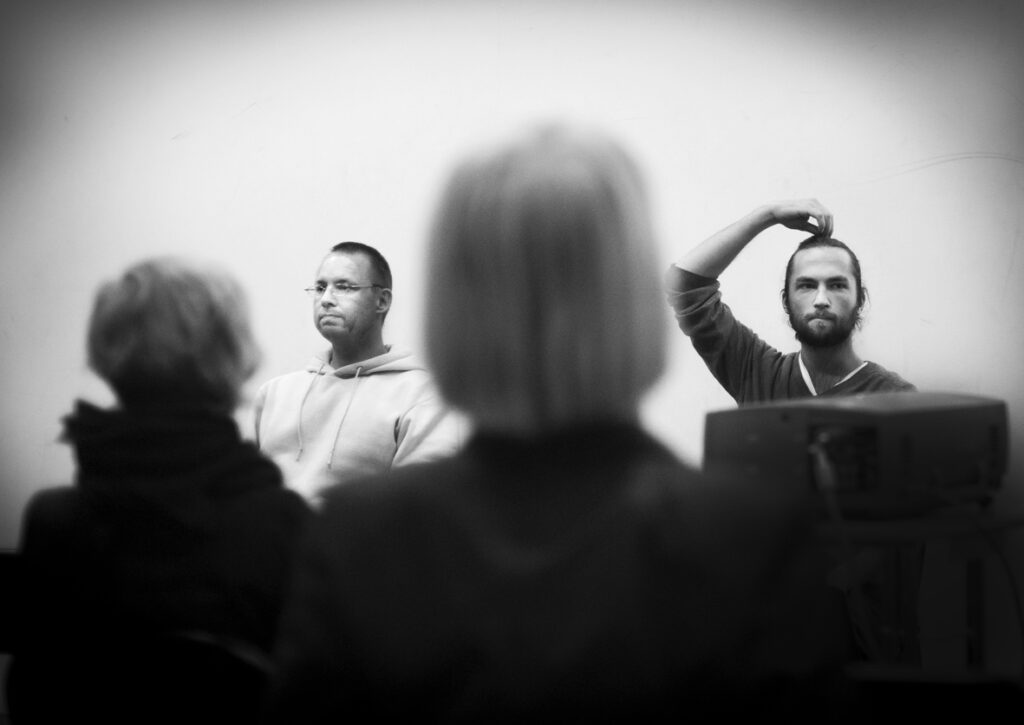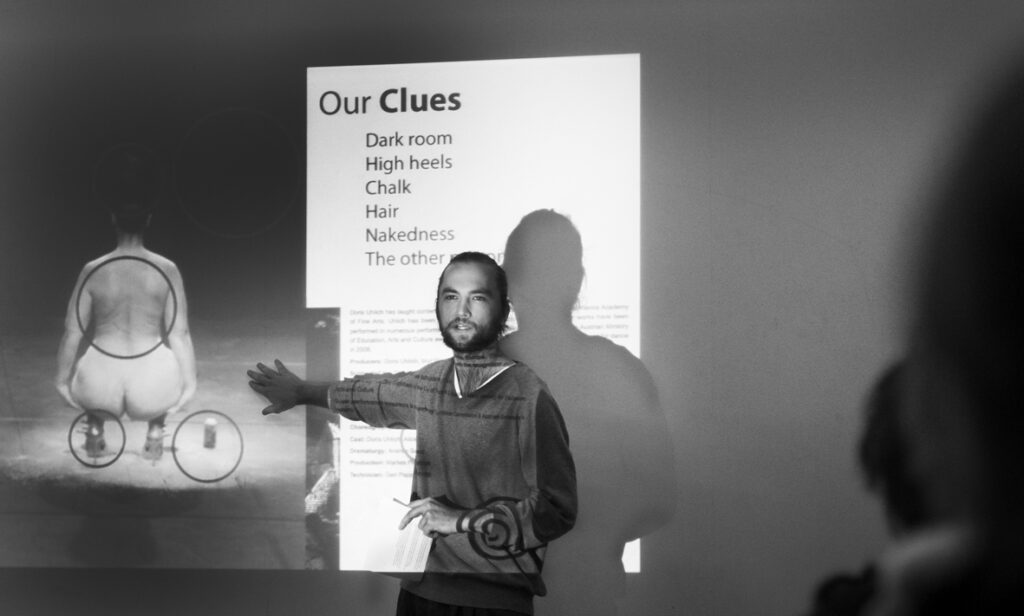
Last week I had the opportunity to go to Helsinki to make a performance together with Pekko Koskinen from Reality Research Center. It was performed at the Baltic Circle Festival under the title Staged Larceny:
This operation attempts to steal the fabric of one performance to create another. The theft is conjured by you, our assistants in this crime of fiction.
In order to perform this theft, we reframe our target, a piece called more than enough by Doris Uhlich, kidnapping it to a different context. With the frame we build, the piece will have connotations beyond itself, reasons that stem from our fabrications and falsehoods. In other words: we will lie and you will interpret.
The work consisted of three parts. A briefing, the “theft” and a debrief. Here are a couple of photos by Tani Simberg from the briefing.

The briefing consisted of a few diffrent parts. Here is an excerpt:
We will be entering the territory of this performance disguised as typical “spectators”. Now, what is a spectator? Spectator is a observatory being that operates near performances, staying mostly still and silent, thus making itself less noticeable — a spectral ghost, of a sort. From this, nearly invisible position, they observe and consume things such as performances. They also serve as cultural shields against the eruptions of performances — a buffer between the rawness of performance, and the regularity of everyday life.
To extract valuables from the performance, we will blend into a group of spectators hovering nearby in this territory. We will now show you the basics of spectating, to help you to blend in. You’ve already tried to sit on a chair in a spectatorial manner. But of course, there is a great variety of postures for such sitting.
We have chosen 5 basic postures to have a closer look at, if you can switch between them during the operation you will be fine. Please copy our movement.
Neutral – Hands on your knees. Not to much space between your knees.
Streched – If you are losing interest but want to keep it. Stretch your back and neck.
Forward leaning – When you have interest. Get support from your elbows. Put your hands together.
Backward leaning – When you get too comfortable or bored. (Go Sceptical by drossing your arms over the chest)
Uncomfortable – always shifting position, crossing legs, looking here and there.
The briefing was reinforced during the performance by a deck of cards consisting of text with questions and instructions. The card deck worked as a tool for exploration, to enable a “search for valuable fragments: moments in time, details of senses, peculiar thoughts”.

Here are a few examples of cards:
- Discreetly mirror some of the movements happening on stage.
- Concentrate on listening rather than looking.
- Relax to the point that you might fall asleep.
- How would it be to see this performance in your living room, kitchen or toilet?
- Why are you here? What brought you into this situation?
The cards worked to produce alienation as well as engagement in the performance at stage. In the first iteration we had statement cards as well but they didn’t really make sense when we put them in use.
We tried two different ways to end our staged “theft” after the stolen performance was over, but non of them really worked out in a good way.
All in all it was interesting to attend the festival and try to play around a bit with the audience position.
Leave a Reply